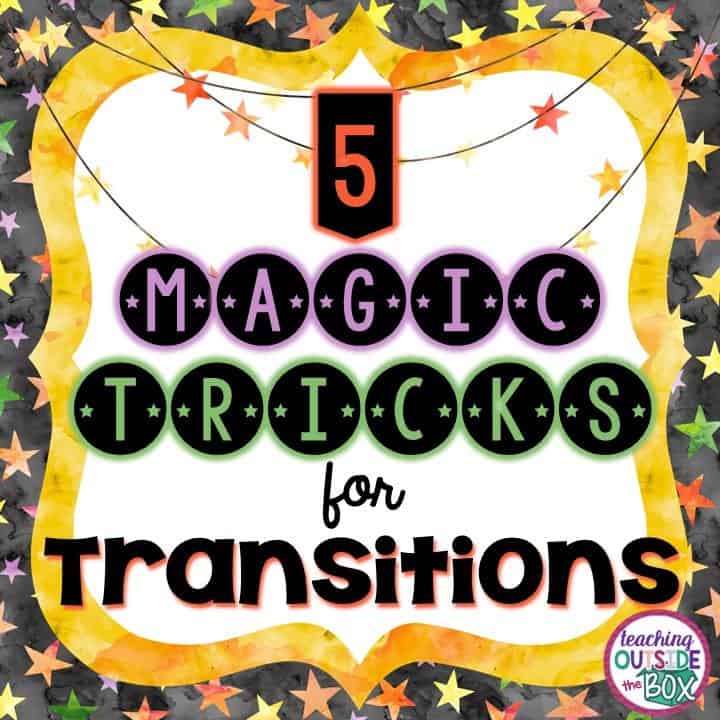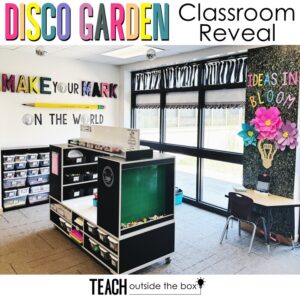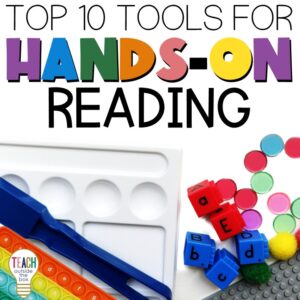5 MAGIC TRICKS for Transitions
Happy Thursday, teacher friends! Today, I’m sharing with you my top five favorite “magic tricks” for smooth, easy, quick, and engaging transitions in your classroom, guaranteed to keep you from pulling your hair out! A classroom “transition” is defined as any time students are moving from one activity to the next, and very often moving from one location of your classroom to another. This might be moving from carpet instruction to their desks, or moving from their desks to line up for lunch. It also might be going to get materials and bring them to a designated area, or forming partnerships and groups. When you think about it, we literally have DOZENS of transitions during our school day, sometimes too many to count, and those minutes add up very quickly. Any way you look at it, our biggest goal for transitions should be for them to be as quick and smooth possible, with the LEAST amount of chaos possible!
Last Sunday, I handed this challenge over to my INCREDIBLE followers, and they shared with me some of their favorite strategies for keeping transitions simple and easy. I’m not gonna lie…My followers are pretty amazing and make me look good! 🙂 I’m so thankful to have them as part of my professional learning community! Here are my top 5 favorite “magic tricks” for transitions, brought especially to you by teacher rockstars!
1) SONGS AND CHANTS
Before beginning the transition, start a song or chant that the students must follow with you, and by the end of which, the transition should be complete. For example, with little ones, you might say, “By the time we finish singing the bumble bee song, you should be in your carpet spot in listening and learning position!” You can do the same thing with a chant or a rap, or even play a song on your phone. This gives students something to focus on as they are moving to a new spot, and distracts them from meandering around the classroom or talking with friends on the way there. Playing songs is perfect for arrival routines and cleanup routines as well. One of my viewers had a fantastic suggestion to count by specific number patterns as they are moving, which is a great way to tie in extra practice and review. For example, you might say, “Let’s count by 10s to 300, and by the time we get to 300, you should be seated at your table with your math journal out.” You can also have students spell out sight words or spelling words, taking one step for each letter of the word.
2) COUNTDOWN
Many teachers will set a countdown timer on their Interactive Whiteboards or document camera, setting a specific time limit for transitions. I also frequently count backwards from a specific number, and by the time I get to zero, students must be in their new learning spots, with necessary materials ready to use. An important guideline for time limits is that you MUST follow through with the limit that you give them. If students do not transition in time, you must take a moment to practice routines again. Many teachers also set class goals or make it a competition in which students try to “beat” their transition time from the previous time. You can even write their times on the board and try to shorten them each day. This is an awesome motivator for students!
3) RELEASE BY GROUPS
When students all need to go to the same place at the same time, chaos is GUARANTEED to ensue if you send them all at once. Examples of chaotic transitions might be getting drinks from one water fountain, hand washing, gathering science materials, or getting textbooks from the same shelf. In cases such as these, it’s very important to release students by groups, such as birthday months, top lockers/bottom lockers, students who are wearing ____, etc. Calling out categories mixes it up and makes it a bit more fun for the kids. Also, when gathering materials, consider sending one student from each group to get them for his or her table and put them back when finished. Whichever method you choose will reduce traffic during transitions and keep them smooth.
4) REPEAT AND DO
Before giving a set of oral directions to students, consider how many directions are realistic and developmentally appropriate for your students. For Kindergarten and First Grade, this is no more than two, no more than three for Second or Third Grade, and no more than 3-4 for Fourth and Fifth Grade. When I ask my student to go get materials, I have them hold up fingers along with me and repeat directions after me, sometimes more than once, before they are transitioned. For example, they might repeat, “1 – I need my math journal. 2- I need a pencil.” You can often hear students whispering and repeating the directions even as they are getting their materials.
One of my viewers had an excellent strategy that she repeatedly practiced with her students to prepare for transitions:
1 – Put away supplies.
2 – Stand Up.
3 – Push in your chair and stand behind it.
When she called out these numbers, students knew exactly what they meant (after extensive practice) and followed through with routines.
5) CELEBRATE SUCCESS
This goes for any and all procedures and routines, but you should always make a point to recognize and point out transitions that meet your expectations, both for individual students and a whole class. You might choose to have a short celebration, reward chart, or marble jar for a whole class incentive. Use vocabulary such as, “I noticed….” and “I appreciate…” when pointing out behaviors. Smooth transitions are the perfect opportunity to praise and reward the behaviors that you want to continue and keep your well-oiled classroom machine running in a positive way.
I hope these transition tricks might help you in your classroom!
Please share your favorite tricks in the comments below!
Love the GORGEOUS papers and fonts shown in this post? Stop by two of my favorite TpT stores, Paula Kim Studio (papers/elements) and Kimberly Geswein (fonts) to grab them! 🙂






